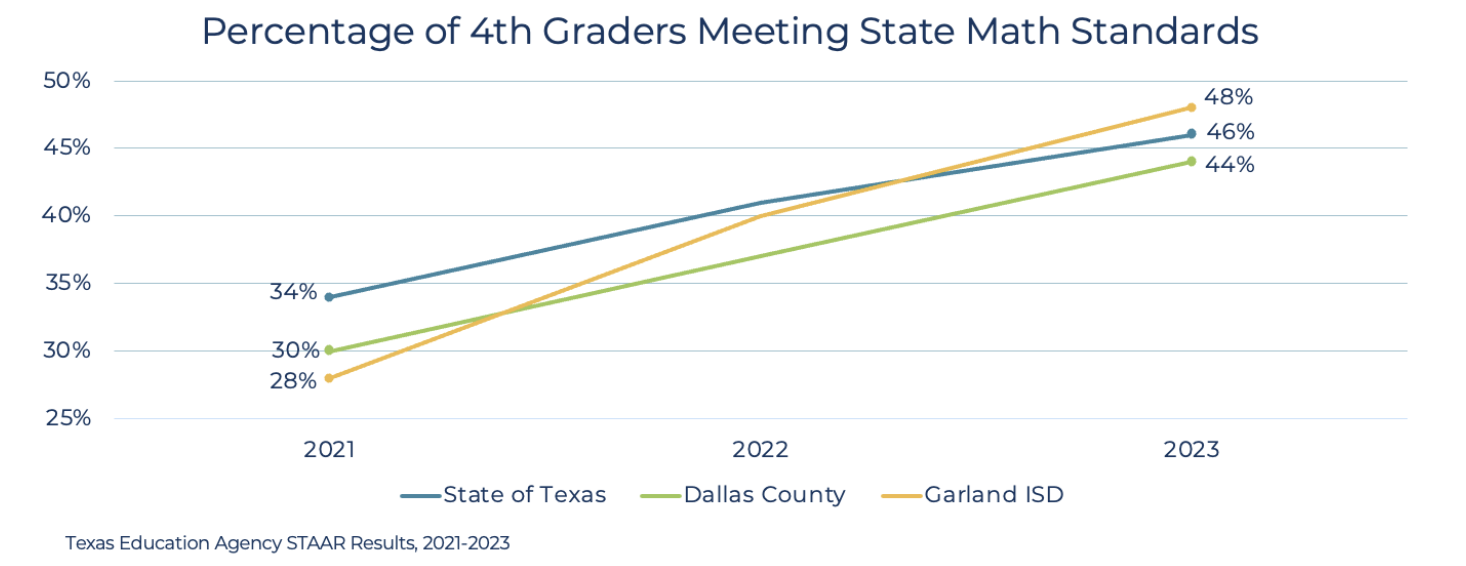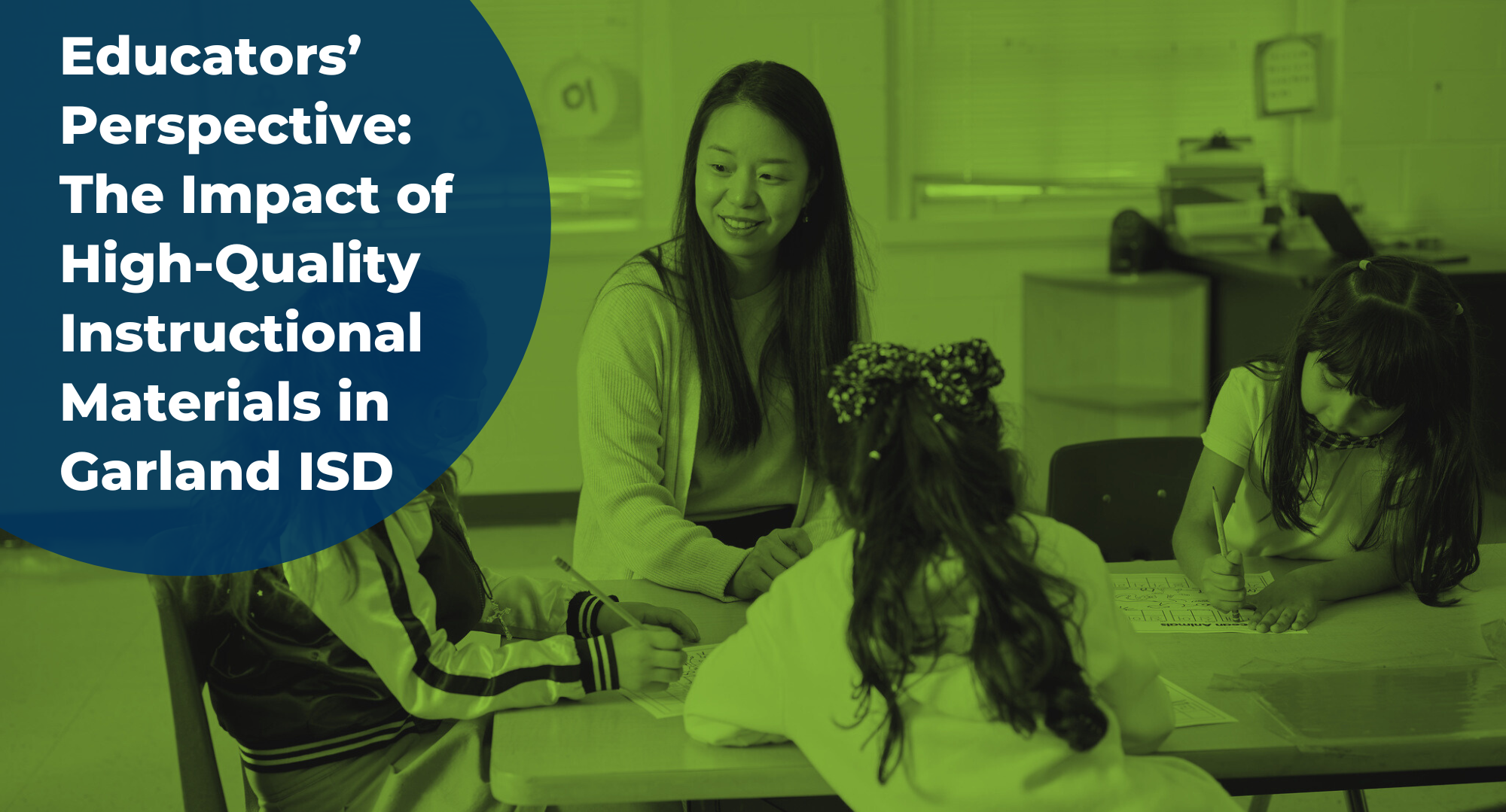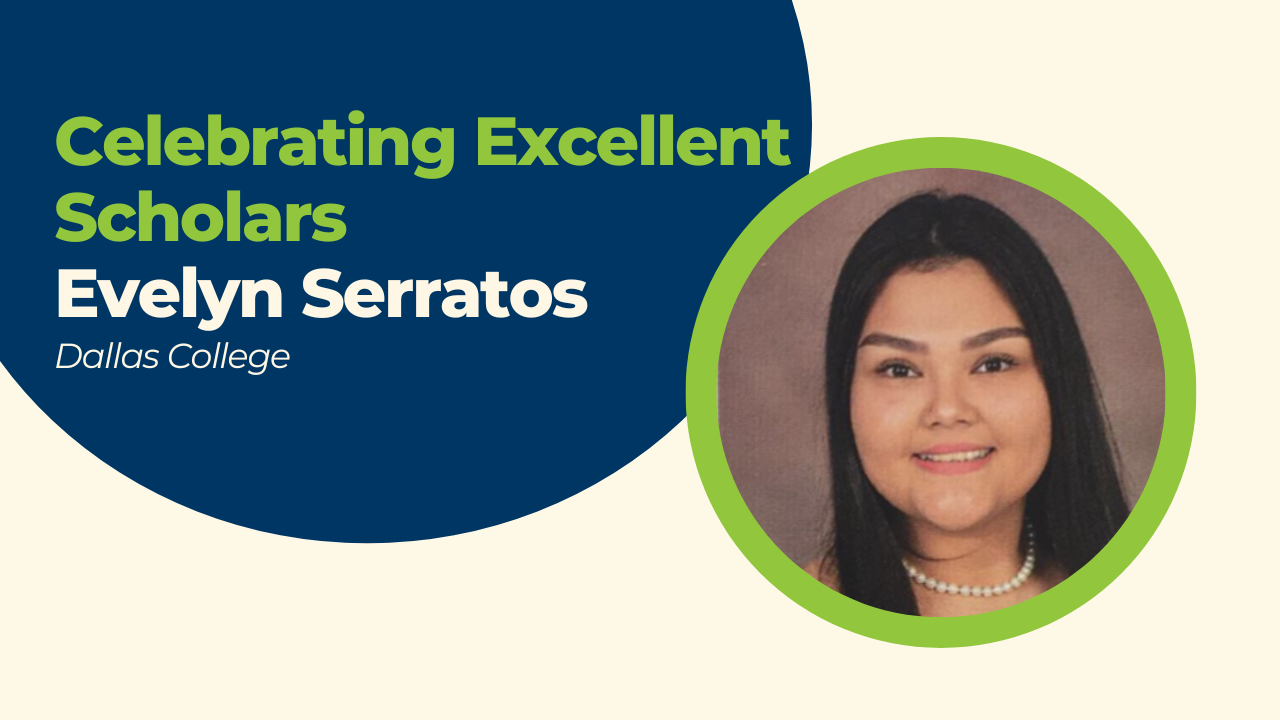As we spotlight school districts in Texas that provide high-quality instructional materials (HQIM) to their students, we hope this series shows the role these materials play in closing achievement gaps and providing equitable educational opportunities to reach economic success. Read the two additional entries in our Educators’ Perspective series to follow how other districts are benefiting.
Educators in the Garland Independent School District committed themselves to closing academic gaps left in the wake of the COVID-19 pandemic. To ensure students catch up to grade level, Garland ISD created its Academic Acceleration Plan in the spring of 2021 that prioritizes literacy, mathematics and college, career and military readiness (CCMR). One crucial component of this plan is the implementation of high-quality instructional materials.
House Bill 1605 (88R) provides funding for Texas school districts to use HQIM to instruct students, and many school systems across the state, including Garland ISD, are already adopting this transformative strategy. HQIM are grade-level curricula based on research and aligned with the Texas Essential Knowledge and Skills (TEKS) standards. Using HQIM ensures all students have access to rigorous, grade-level content and simultaneously enables teachers to spend less time making lesson plans and more time focused on teaching their students.
Specifically, GISD’s Academic Acceleration Plan included adopting the Texas Education Agency’s literacy and math HQIM. Since then, the district has seen significant growth in student academic performance. From 2021 to 2023, the portion of Garland third graders that meet state standards in reading increased 15 percentage points. The portion of fourth graders meeting state standards in math increased 20 percentage points in the same period. That translates to 1,000 additional young people on a path to economic mobility.

“I’m very data-driven in my instruction,” said Luz Rolon, Garland ISD fourth grade teacher. “I’ve seen some of these kids who [started] a lot lower making good strides, and they feel so good about it... They feel very confident.”
Hear directly from more Garland ISD educators on how HQIM has positively impacted their classrooms:




